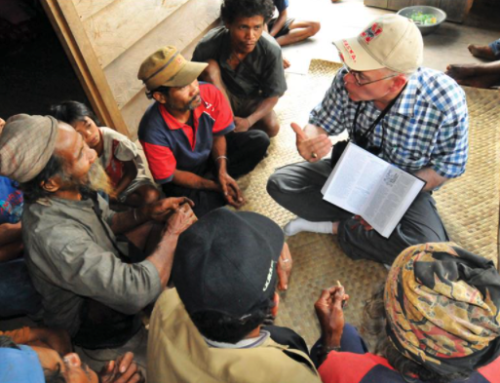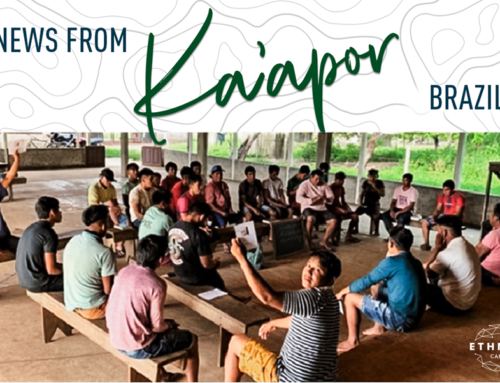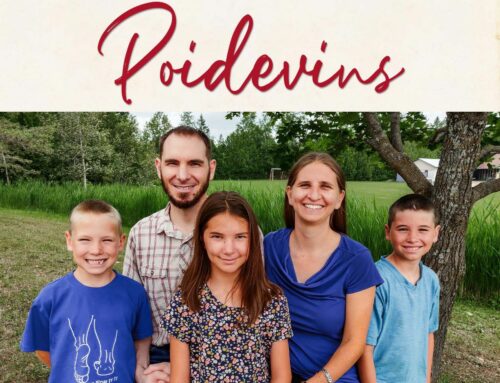Missionary Porter Hampton shares a glimpse of the first wedding he and his wife have witnessed in the village where they live.
It took most of a year to prepare for Boni and Yesika’s wedding, the first wedding in the Nagi village since the Hamptons moved there six years ago.
The months of preparation for the grand event kept most of the village in a flurry of activity far in advance of the celebration. Hauling cooking rocks and supplies of firewood, fixing up houses, sprucing up trails and hiking in some “modern” foods like rice, oil and Ramen noodles from the closest town were just a few of the extra things that had to be done before all the wedding guests arrived.
“What we were told was going to be a two- or three-day event ended up lasting eight days,” Porter writes. And some guests, he says, stayed even longer.
“The wedding was for Boni and Yesika, but Boni’s sister-in-law’s ‘bride price’ had not been paid, so they decided to pay that at the same time. This was a lot of work for the family,” explains Porter.
The days were full of cooking and more cooking. There was also on-going haggling over the bride-price.
“When the Nagis have a wedding, it is the norm for almost anyone who still owes something for their wife to pay something toward those debts. This cannot be just a quick handing over of some cash. Culturally, it must be accompanied by a very large sago meal, complete with dried meat, vegetables, and frequently now, by rice and noodles. Both the person making the payment and the person receiving it will prepare these large meals and then exchange them, along with various articles of value like plates, canned foods and clothes.”
With so many people attending such an event, Porter says the exchanges go on non-stop. “Even tribal weddings come with a significant amount of drama,” he observes.
The final event consisted of all of Yesika’s family escorting her to the groom’s wedding hut amid “lots of shouts and hooting,” according to Porter.
Loaded down with a heavy string bag that held all the bride’s belongings, Yesika’s female relatives accompanied her carrying gifts and food for the new in-laws. Her male relatives carried gifts like bows and arrows and basket cages of lizards and snakes.
For a very long time, there was discussion outside the wedding hut while gifts and money were exchanged. Then the bride’s family entered the wedding hut to eat the food prepared for them, after which Yesika’s female relatives escorted her to her new home while the men in her family danced all night. The women stayed with Yesika for several days and then returned to their own houses.
After all the wedding guests finally returned home, the village grew quiet again. “We would love to say that Boni and Yesika are living ‘happily-ever-after,’” Porter writes. “But being an arranged marriage, Yesika is not too happy to be with her new husband, who is about the age of her father.”
Porter is hopeful that the Good News about Jesus from God’s Word that the Hamptons are there to share with the Nagi people will make a difference in Nagi culture—one that could transform the lives of Boni and Yesika. “It is exciting,” Porter shares, “to think that they could be a shining example of a godly marriage someday.”
Pray for God to work in the hearts of the Nagi people and especially this newly married couple. Pray that He will prepare hearts for the gospel to sweep and impact the village with His hope and healing and light so that He will be glorified through transformation in Nagi families and marriages.






